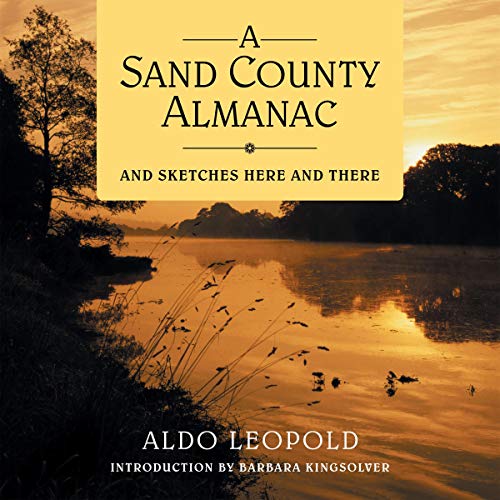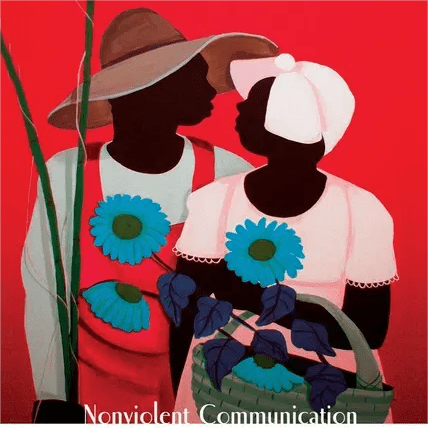I like a young aspen, because one day, it will be old.
This is a sentence on the title page of A Sand County Almanac by Leopold, an American ecologist. It is a sentence that can make us think. Like this poplar tree, because of its young life is full of vitality but easy to die, or because of its growing process of aging, or one day it will become old, the natural law of renewal and iteration?
Leopold’s A Sand County Almanac is part of the natural literature trilogy, along with Thoreau’s Walden and Rachel Carson’s Silent Spring. All three are American works. It is not difficult to find that, although the United States is a young country, the awareness and initiative of environmental protection has taken the lead.
Each of the three works has its own merits, playing a warning and advocacy role in nature protection and ecological harmony and stability. Different from the other two works, A Sand County Almanac systematically introduces the author’s detailed observations and experiences during the year he lived in the sand Village, presenting us with a series of real, natural and touching ecological scenes, and then returning to the serious challenges facing land ethics.
The book is divided into three parts: the yearbook of Sand Township; Plain writing — here and there; Conclusion. Today, we will start with these three parts, step by step to approach this natural literature model.
This part of the sand Town yearbook, the author is based on the month, respectively, tells the twelve months of a year, with the change of seasons and climate, the natural plants and animals gradually appeared, noisy, a lively, rich, complex, colorful world around us.
Whether the ice and snow have just melted, the earth is warming, or the coming of winter, everything slowly returns to silence, not to mention the vibrant and fruitful summer and late autumn, sand Township has its own unique and magical charm. Every month, there are timely protagonists asserting their inalienable sovereignty over the world.
A skunk’s tracks in the snow during melting January are one of the defining events at the start of the year. And a good oak tree can reproduce 80 years of American history in its 80 rings. The geese return in March, breaking through the gloom of the melting snow, and evoking the song of spring of the linnet in the woods…
As a forest officer, the author travels around the sand village all year round, and with keen vision and careful thinking, he deeply explores the natural ecology, observing and recording the ordinary and wonderful stories that are constantly happening in that free world. Farms, woods, swamps, rivers, grasslands, birds, fish, flowers, tall trees, insects, animals, anglers, hunters, woodcutters, and the author himself who put an anklet on the titmouse, and so on. Animals, plants, humans, and the natural environment on which they live, in the sand country this is not a vast world, Make up a complete natural ecosystem, everything looks so vivid and perfect.
In this part, we can hardly count the amount of knowledge that can broaden our horizon. Nowadays, for us in the highly civilized modern and mechanized life atmosphere, the customs and landscapes of those original, primitive and agricultural society have already become far and away in the past, and we don’t even have the ability to imagine them. Still, we were drawn to the little bits of sand country described in the book. The writer’s life of being a member of nature, of the primitive wilderness, is so attractive!
The natural beauty of the first part is, for us, a pleasant reading experience. However, when we enter the second part with the same longing eyes, we find that changes are quietly taking place here and there.
The second part is written as plain by the author. Indeed, his writing is only true and plain, no fancy embellishments, but it is very attractive to read. The second part turns from the time and space of the first part to the region, respectively writing about the natural state of organisms and environment in ten areas around the sand township. The sighs and laments of the animals and plants that live on that land, or the swamps, forests and grasslands. The extinction of the marshes to the flood of history, the impoverishment of the farm meadows, the extinction of the passenger pigeon, and so on, are directly or indirectly related to the endless stream of travelers, pioneers, and overhunters.
The taste of wilderness travel has changed, so that future generations can no longer see real wilderness, real wild streams, real woods. Those increasing economic aspirations and the upgrading of increasingly sophisticated tools are to blame for the rapid decline of nature.
People live their lives under a seemingly unassailable logic of justification, and slowly the world becomes what we see. The author laments the arrival of the pioneers and reminisces about the natural past, which, to our eyes today, was beautiful just as it was being destroyed. Nowadays, the city is full of tall buildings, poisonous gas, polluted water. The strips and blocks of green belt that dot the vast urban area serve to purify our air. The wild winter plants and birds that are facing extinction still do not escape the clutches of human beings. Compared with the book, we are living in a demonic chaos.
As for the land ethic, I am afraid that in modern cities, this concept has disappeared without a trace.
With great enthusiasm, the author shows us the life and rhythm of the nature in the sand village in a year. After that, he deplores its changes and losses, and finally returns to the original intention of his book, which is to advocate land ethics.
Environmentalism, once linked to aesthetics, has somewhat changed its taste, and mechanization and new modes of outdoor recreation have rendered the wilderness less accessible. The so-called “wilderness for outdoor recreation” and “wilderness for scientific research” will no longer be a real wilderness, but only the “wilderness for wild animals and plants” that is on the verge of destruction.
Land ethics depend on ecological conscience, while people’s natural resource protection system is always based on pure economic egoism. This is the tragic outcome of natural environment destiny, and also a great tragedy that human beings don’t know who is the real master of this earth.
Since the existence of organisms on the earth, the land and all the surrounding environment for survival have been the shared resources of all organisms. They follow the delicate balance step by step under the invisible laws of nature, natural competition and mutual benefit. However, with the development of industrial society, primitive society and agricultural society withdrew from the stage of history, and human beings had more and more control over nature. They began to transform and overcome nature, and broke the harmonious coexistence of various creatures on earth after countless centuries. Thus, a broken Earth is revealed to those of us who have never seen the planet in its original beauty.
When will we be able to think like mountains? If one day, perhaps we will appreciate the wisdom of nature endowed mountains.






